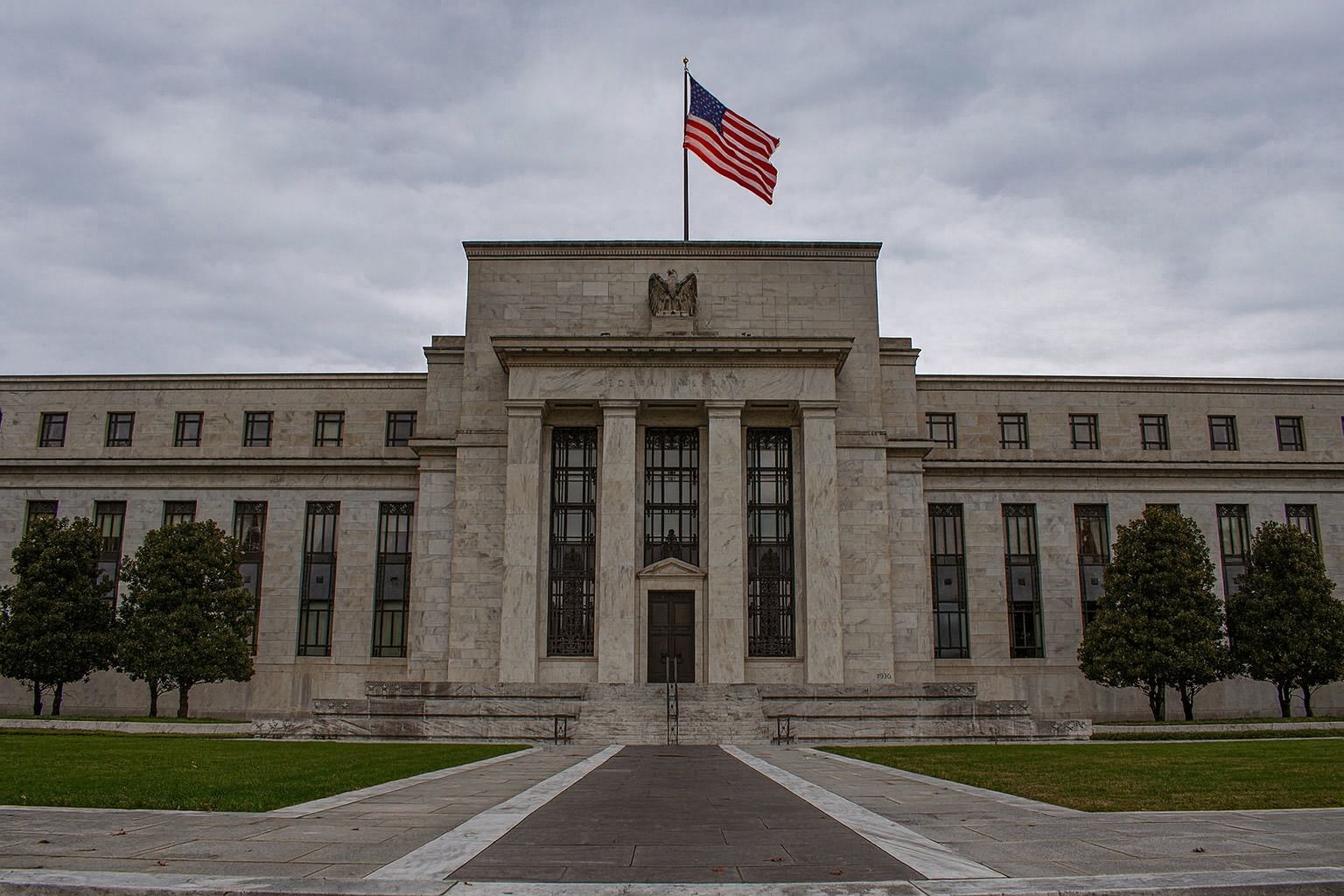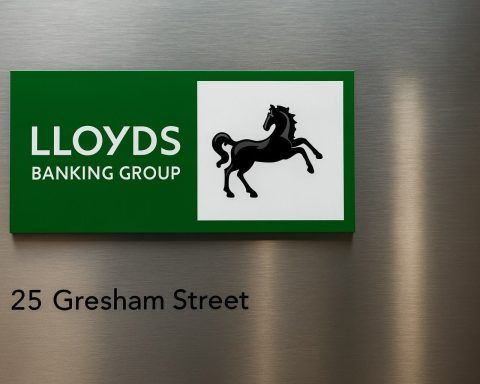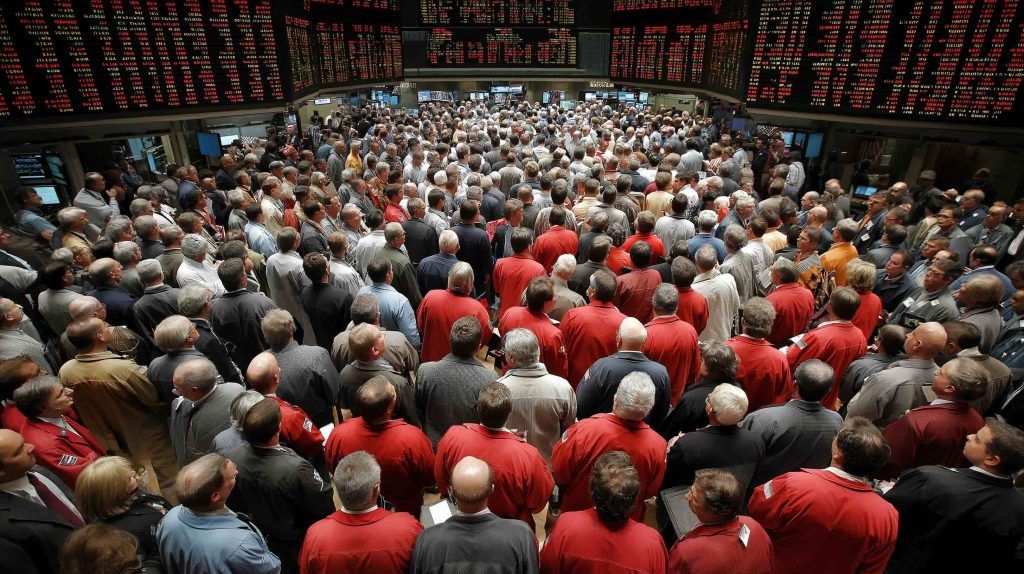Federal Reserve Developments and Market Reaction in Early November 2025
- Second Rate Cut of 2025: The Federal Reserve lowered its benchmark interest rate by 0.25 percentage points to a target range of 3.75%–4.00% on Oct. 29, 2025 – the second cut this year – aiming to cushion a cooling labor market [1]. Simultaneously, the Fed announced it will halt the runoff of its bond holdings (ending “QT”) as of Dec. 1 to maintain liquidity in money markets [2].
- Powell Signals No Sure December Cut: Fed Chair Jerome Powell struck a surprisingly hawkish tone, warning that another rate cut at the next meeting is “not a foregone conclusion” and emphasizing policy is “not on a preset course” [3]. He noted “strongly differing views” among officials on whether to cut again, hinting the October move could be the last of 2025 [4] [5].
- Inflation Elevated but Easing: Powell highlighted that inflation has “moved up” from earlier in the year (core PCE ~2.7% in August) and remains “somewhat elevated,” though he believes the risk of persistent inflation has “declined significantly” since spring [6] [7]. The Fed still anticipates inflation drifting down toward its 2% goal in coming months, even as new import tariffs temporarily push prices higher [8] [9].
- Jobs Cooling, Data Blackout Hits: The Fed’s statement noted job gains have slowed and unemployment has ticked up (though still low) [10]. Powell flagged downside risks to employment and acknowledged the labor market’s weakness is partly due to shrinking labor supply (fewer workers) rather than falling demand [11]. A government shutdown has halted official economic reports, forcing the Fed to rely on private data; Powell quipped that when “driving in the fog, you slow down,” explaining why policymakers must be cautious without clear data [12] [13].
- Market Whiplash: Investors initially cheered the rate cut, but stocks erased their gains once Powell hinted at a possible pause. The S&P 500, which had been up on the day, finished flat by Wednesday’s close [14]. The Dow and Nasdaq similarly lost momentum. In the bond market, Treasury yields jumped – the 10-year yield climbed to roughly 4.06% as traders scaled back hopes of swift further easing [15]. The U.S. dollar also strengthened modestly on Powell’s hawkish remarks [16].
- Wall Street Rally Intact: Despite the mid-week wobble, U.S. equities extended their broader rally. By Friday, Oct. 31, the Dow Jones Industrial Average closed at 47,562.87, the S&P 500 at 6,840.20, and the Nasdaq Composite at 23,724.96 – all posting weekly gains and capping the longest monthly winning streaks in years [17]. Strong earnings (e.g. Amazon’s blowout forecast) lifted sentiment, even as the Fed’s caution injected some jitters [18] [19]. Stocks have been buoyed for weeks by expectations of Fed easing, and the S&P had risen for four straight sessions heading into the meeting [20].
- Economists Split on Next Steps: The Fed’s mixed messaging has experts divided. “Powell explicitly signaled a break” from consecutive cuts, observed Michael Pearce of Oxford Economics, noting a “growing chorus” at the Fed prefers to wait and assess before any further moves [21]. Some, like State Street strategist Michael Arone, still predict another cut in December, reasoning that incoming data (even if private) will show continued labor market weakening that warrants more easing [22]. “I expect it will show a continued weakening in the labor market,” Arone said, anticipating the Fed will ease again next month [23]. However, others urge caution: “We see this meeting as far more hawkish than [markets] expected,” wrote Bespoke Investment Group, arguing Powell’s emphasis on debate justifies dialing back bets on a December cut [24].
- FOMC Voices Diverge: The internal Fed split is stark. October’s decision saw two dissenting votes – one official wanted no cut, another wanted a bigger cut [25]. Fed Governor Christopher Waller (a voter) publicly advocated “more policy easing to shore up a weakening labor market” in remarks on Friday [26], signaling support for additional cuts. On the other hand, Powell and others suggest policy may already be near “neutral” after 150 basis points of 2025 rate reductions [27] [28]. This divide – essentially how to balance lingering inflation versus rising recession risks – has left investors craving clarity [29].
- Rate Cut Odds and Outlook: Market pricing now reflects Powell’s cautious stance. Futures indicate roughly a 65–70% probability of another quarter-point cut at the Fed’s Dec. 9–10 meeting, down from about 85–90% before Powell’s press conference [30] [31]. Traders still believe the easing cycle will continue into 2026 – futures show the Fed’s policy rate drifting toward 3% by late next year [32], implying several more cuts in 2026 if not sooner. In essence, markets foresee the Fed pausing now but not done cutting, assuming inflation cooperates. Short-term economic forecasts remain modest: analysts generally expect no immediate recession, with U.S. growth running at a moderate pace [33] and inflation gradually cooling into 2026. The Fed’s aim is to engineer a “soft landing” – supporting the job market enough to avoid a hard downturn while guiding inflation back to 2% [34] [35]. As Powell put it, “we are trying to get to the end of this cycle with the labor market in a good place and with inflation…at 2%” [36].
Fed’s Latest Policy Moves: Rate Cut and Liquidity Support
In the Fed’s highly anticipated late-October meeting, officials voted 10–2 to cut the federal funds rate by 0.25%, setting a new target range of 3.75% to 4.00% [37] [38]. This marked the second rate reduction of 2025, following a similar cut in September. The move was widely expected and intended “to temper any further weakening of the job market,” according to Reuters [39]. Recent data (before the data blackout) showed job growth losing steam and unemployment inching up, so the Fed acted to provide some stimulus to the economy.
Alongside the rate cut, the Fed unveiled a significant balance-sheet policy change: it will halt the drawdown of its bond holdings by December [40]. In practical terms, this means an end to “quantitative tightening” – instead of letting its Treasury and mortgage-backed security portfolio shrink, the Fed will keep its roughly $6.6 trillion in holdings steady for now [41]. Officials even discussed limited Treasury bill purchases to ensure smooth market functioning [42]. This liquidity boost is a backstop against recent money-market strains, signaling the Fed’s commitment to prevent funding squeezes.
The decision to pause balance sheet runoff is “market-friendly” and was largely expected by traders [43] [44]. The runoff had been proceeding gradually since 2022 (when the Fed’s assets peaked near $9 trillion) [45]. By stopping it now, the Fed reassures markets that it won’t exacerbate any volatility in borrowing markets. Some analysts noted this might only have a marginal positive effect on broader financial conditions because QT’s end was telegraphed and slow-moving [46] [47]. Still, it removes one source of tightening. “Had the Fed been more dovish with its rate outlook, combined with the QT messaging, that could have certainly triggered a stronger risk-on sentiment… but that wasn’t the case,” said Amar Reganti of Hartford Funds [48], emphasizing that the tone of the rate outlook mattered more to markets than the technical balance-sheet tweak.
Powell’s Press Conference: Caution and a “Not Foregone” December
Chair Jerome Powell took the podium after the decision and delivered a message that both acknowledged the rate cut as a “solid” move yet poured cold water on assumptions of continued easing [49]. He pointed to the 10–2 vote as a strong endorsement of acting now to support a “gradually cooling labor market” [50]. However, in an unusual bit of candor, Powell openly discussed the next meeting. “There were strongly differing views about how to proceed in December,” he admitted, breaking typical Fed protocol of not prejudging future meetings [51]. He then delivered the quote that ricocheted through markets: “A further reduction in the policy rate at the December meeting is not a foregone conclusion. Far from it.” [52]. In other words, don’t count on another cut in 2025.
This hawkish hint shocked some investors who had penciled in a year-end rate trim as almost certain. Powell stressed that policy is “not on a preset course” [53] – the Fed will watch incoming information and decide meeting by meeting. He noted that after two consecutive cuts, many on the committee feel it’s prudent to pause and evaluate, especially given unusual uncertainties [54]. Those uncertainties are twofold: 1) a lack of fresh government data (due to the federal shutdown), and 2) a split within the Fed itself on the proper path forward [55].
Powell described the policy divide: some officials, like Governor Stephen Miran, argued for a bigger 0.50% cut, feeling the Fed should do more to boost hiring, while others, like Kansas City Fed President Jeffrey Schmid, wanted no cut at all, worried about still-high inflation [56]. Such opposing dissents – one wanting more easing, one wanting none – are exceedingly rare (only the third time since 1990 that Fed officials dissented in opposite directions) [57]. It dramatizes the crosscurrents the Fed is navigating.
Powell’s own stance leaned toward caution. He indicated that after this latest cut, interest rates are now “modestly restrictive” – meaning they still act as a slight brake on the economy – and likely close to the neutral level that neither stimulates nor restrains growth [58] [59]. He implied that with 150 basis points of rate reductions since the last peak, the Fed may have done enough for now [60] [61]. However, he didn’t slam the door on future easing altogether; Powell added that the Fed “would resume its rate cuts at some point” if needed to keep the expansion on track [62]. It’s a delicate balance: pause now, but don’t call it quits.
One striking theme from Powell’s comments was skepticism about how effective further rate cuts would be in boosting jobs. He observed that the slowdown in hiring is due “mostly” to labor supply issues – fewer available workers – rather than a collapse in demand [63]. “What does our tool do? It supports demand,” Powell mused, acknowledging that cheaper credit can’t magically create workers [64]. Cutting rates to fight a labor shortage is like “pushing on a string,” he suggested [65] [66]. Yet, Powell still believes the Fed should try to support the labor market with policy if it weakens, even if the impact is uncertain [67]. “It’s a complicated situation,” he conceded [68]. This nuanced view – that rate cuts might not cure what ails the job market, but the Fed may do them anyway to err on the side of caution – underscores why December’s decision is genuinely up in the air.
Economic Outlook: Inflation, Employment, and the Data Dilemma
Inflation: The Fed’s dual mandate – balancing inflation and employment – is at the heart of its dilemma. On inflation, Powell delivered mixed news. Price pressures haven’t been as bad as initially feared from this year’s oil price rebound and new import tariffs, but inflation is still above target [69]. The Fed’s preferred gauge, core PCE inflation, rose from ~2.3% in spring to about 2.7% by August [70]. Officials expect it could hit roughly 3% by year-end 2025 before coming back down [71]. Powell described inflation as “somewhat elevated”, and the latest Fed statement reiterated that inflation remains above the 2% goal [72].
Crucially, Powell voiced growing confidence that the inflation trend is improving. He said the risk of higher, persistent inflation has “declined significantly since April” [73]. Why? Supply chain pressures have eased and earlier Fed tightening has slowed demand in interest-sensitive sectors. Powell does caution, however, that inflation could “rise temporarily” in the next month or two thanks to new tariffs enacted by the Trump administration (which raise import prices) [74]. But that bump should be short-lived, and thereafter inflation is expected to resume falling toward 2% [75]. In short, the Fed sees the inflation dragon gradually being tamed, but it’s not vanquished yet.
Employment: On the jobs front, the picture is also nuanced. The U.S. labor market has been extraordinarily strong in recent years, but signs of cooling are unmistakable. The Fed noted that job gains have slowed in 2025 and the unemployment rate edged up since its lows [76]. The last official data (August) pegged unemployment at 4.3%, a four-year high though still historically low [77]. Powell pointed out there’s “no evidence of a worrisome deterioration” in broad labor metrics yet [78] – layoffs and unemployment claims remain relatively low. However, high-profile corporate layoffs (especially in tech) and anecdotes of hiring freezes hint at some softening [79].
A key issue is labor supply: immigration curbs, retirements, and other factors have reduced the pool of available workers [80]. That’s propping up wages and making it hard for employers to fill jobs, which in turn slows job growth. Powell referred to a “bifurcated” economy – essentially a ‘K-shaped’ dynamic [81] [82]. Consumers at the upper end of the income scale are still spending robustly (aided by booming stock portfolios), while lower-income households are more stressed, cutting back amid higher costs [83] [84]. Business investment and retail sales overall remain fairly healthy, linked in part to the wealth effects of record-high asset prices [85]. But that prosperity isn’t translating into strong job creation anymore [86]. In essence, the economy is growing without equally robust employment gains, a tricky scenario for the Fed.
Data Blackout: Further complicating the outlook is the ongoing federal government shutdown (now over a month old) which has left the Fed flying somewhat blind [87]. Important economic reports – nonfarm payrolls, inflation indexes, retail sales, etc. – were not released for September or October due to the funding lapse [88] [89]. “Lack of official data” was explicitly mentioned multiple times in the Fed’s statement [90]. Powell said policymakers will “collect every scrap of data we can find” from private sources and Fed regional surveys to fill the gap [91]. But he admitted that not having the usual government statistics makes the Fed more cautious, since they’re essentially “driving in the fog” without clear visibility [92]. If the data blackout continues, Powell hinted it could affect the December decision, presumably by arguing for waiting longer to gather clarity [93].
Notably, the Fed’s own staff and officials are using older data as anchors. They referenced the August jobs report as the last solid read, and noted “available indicators suggest” moderate growth continued into the fall [94]. Private-sector proxies (like ADP’s payrolls report and other analytics) have taken on outsized importance. As one strategist, John Velis of BNY, put it: “the lack of data is going to make it very hard to forecast where we think the Fed is going to be in six weeks’ time” [95]. This uncertainty itself could cause market volatility as investors swing back and forth on each fragment of private data [96]. The Fed is essentially in wait-and-see mode, hoping that by December the government reopens or that enough private signals emerge to guide policy.
In summary, the Fed’s stance is that the economy is growing moderately, inflation is above target but trending in the right direction, and the job market is softening but not collapsing [97] [98]. The big wildcards are the data void and how much of the labor slowdown is beyond the Fed’s control (supply-driven). These factors have made the Fed more guarded about committing to further rate cuts until they can confirm the trends.
Market Reaction: Stocks Sputter then Soar, Bond Yields Bounce
Financial markets had braced for the Fed’s move and initially responded in a fairly upbeat manner. In the minutes after the 2pm EDT announcement on Oct. 29, stock indexes ticked higher – a rate cut and the end of balance-sheet tightening were good news that had been largely priced in. The S&P 500 was up about 0.5% at one point during Powell’s press conference [99]. However, as Powell struck a more hawkish tone (downplaying chances of another cut soon), markets swiftly reversed course [100].
By the closing bell Wednesday, the S&P 500 had forfeited its gains and ended flat on the day [101]. The Dow Jones Industrial Average and Nasdaq Composite followed a similar intraday pattern – a post-Fed pop that fizzled into the close. “Stocks swung following Powell’s comments,” Reuters noted dryly, with the S&P’s modest rally evaporating by day’s end [102]. One portfolio manager quipped that “stocks look richer now than they did yesterday based on what just happened”, meaning equities suddenly appeared slightly overvalued given the less-dovish Fed outlook [103]. In other words, if investors had been betting on a steady march of rate cuts boosting asset prices, Powell’s words gave them pause.
Bond markets reacted even more sharply. Treasury yields, which move inversely to prices, jumped as Powell spoke. The benchmark 10-year Treasury yield leapt to around 4.06% – a notable rise reflecting reduced expectations of near-term Fed easing [104]. (When fewer rate cuts are expected, longer-term yields tend to be higher.) Shorter-term yields, which are closely tied to Fed policy, also bumped up. The yield curve remains inverted (with short rates above long rates), but the gap narrowed slightly after the Fed meeting as long yields rose on the hawkish surprise. The U.S. dollar caught a bid too: it strengthened against other major currencies following Powell’s remarks [105]. A more cautious Fed meant relatively tighter U.S. monetary policy than investors assumed, which is bullish for the dollar in the short run.
However, these immediate reactions were short-lived tremors within a larger bullish landscape for markets. By the next day (Thursday), investors seemed to digest the Fed’s stance without panic. Stocks stabilized and then pushed higher again, aided by strong tech earnings. In fact, Wall Street went on to notch a very strong week and month despite the mid-week Fed hiccup. On Friday, Oct. 31, the market rallied after Amazon issued a stellar sales forecast, overpowering lingering Fed concerns [106] [107]. All three major indexes closed that Friday at fresh highs for the year: the Dow at 47,562.87, S&P 500 at 6,840.20, and Nasdaq at 23,724.96 [108]. Those levels capped a sixth straight monthly gain for the Dow and S&P (the longest streak since 2018) and a seventh for the Nasdaq (longest since 2018) [109]. In October alone, the S&P 500 gained about +2.3%, the Dow +2.5%, and the Nasdaq a whopping +4.7% [110]. The U.S. stock market has been in recovery mode, buoyed by cooling inflation, hopes of Fed easing, and big-name earnings – a dynamic that even Powell’s caution did not derail for long [111].
To be sure, Powell’s comments did inject some caution into certain sectors. Rate-sensitive areas like housing and utilities saw less of a boost, since the outlook for falling interest rates became murkier. But cyclical and tech stocks – which thrive on growth and were boosted by earnings – kept the upward momentum. Some analysts interpreted the Fed’s message positively: the fact that the Fed feels it can pause means the economy isn’t so weak that it needs constant stimulus, which in turn suggests no imminent recession. That “goldilocks” interpretation (growth not too hot to spur inflation, not too cold to cause a slump) may underpin continued market strength.
In bond land, after the initial jump, longer-term yields have been relatively range-bound. The 10-year yield around ~4.0% is actually down from highs earlier in the year (it had approached 4.5% at one point). This indicates that bond traders see the Fed’s inflation fight as largely won and expect further easing eventually, even if December is unclear. Mortgage rates and other consumer borrowing costs, which track Treasury yields, could ease if yields drift lower again, but for now remain somewhat elevated due to the uncertainty. The Fed’s decision to stop QT likely helped keep a lid on yields too, by removing a source of supply from the bond market.
In summary, markets reacted with a brief bout of volatility to Powell’s “not so fast” signal on rate cuts. Stocks gave up intraday gains and bond yields ticked higher immediately after the meeting [112]. Yet, the broader market rally remained intact thanks to strong fundamentals and earnings. By the start of November, U.S. equities were hitting multi-month highs and volatility was low – a sign that investors, while attentive to the Fed, are still optimistic that the Fed will manage a gentle economic slowdown without crushing growth. As one strategist remarked, “risk momentum [remains] intact” after an “action-packed week” [113], even if the Fed added a wrinkle of uncertainty.
What Experts and Economists Are Saying
Reactions from economists, analysts, and even within the Fed itself have run the gamut from supportive to skeptical. Michael Pearce, deputy chief U.S. economist at Oxford Economics, interpreted Powell’s message as a clear inclination to pause further cuts. “Powell explicitly signaled a break between this and future meetings,” Pearce noted, describing the Fed’s intent to wait at least one cycle before any more moves [114]. He and others believe the Fed wants to see how two consecutive cuts play out in the economy – essentially hitting a data-dependent pause – especially with inflation still above target.
On the other hand, some market watchers think the Fed may ultimately have to resume cutting sooner due to the weakening outlook. Jim Caron, a portfolio manager at Morgan Stanley, said if the Fed is hesitating now, it raises questions about how much easing will truly come next year. “If we’re debating whether they go one more time right now, well then how sure can you be that we’re going to go to 3% in 2026?” Caron mused [115]. (Prior to Powell’s comments, markets assumed the Fed would keep cutting into 2026 to get rates down to ~3%; Caron implies that path is less certain if the Fed is already wavering.) Still, Caron personally expects the labor market slowdown will justify a December cut, aligning him with the doves [116].
From the perspective of Fed insiders, one notable voice is Governor Christopher Waller. Waller is a voting member and typically a hawk on inflation, but he surprised observers by making the case for more easing on the Friday after the meeting [117]. He argued that with the job market clearly weakening, the Fed should be proactive in providing support [118]. Waller’s stance shows that not all hawks are against further cuts – even some inflation-focused members see value in insuring against a sharper downturn in employment. His remarks boosted speculation that the Fed could still cut in December if upcoming private data (like the ADP jobs report) disappoints. In essence, Waller voiced what the “doves” on the committee are thinking: better to risk a bit more inflation than risk a recession by doing too little.
Market strategists also chimed in on the balance the Fed is trying to strike. “Stocks look richer now than they did yesterday,” noted Matt Rowe of Man Group after Powell’s presser, suggesting that equity valuations may have run ahead of fundamentals given the Fed’s newfound caution [119]. John Velis (BNY Mellon) highlighted the volatility potential due to the data gap: without government reports, each private data point (like a payrolls estimate or inflation survey) could cause outsized swings as traders “parse” them for clues [120] [121].
From the academic economist side, many are discussing the concept of a “soft landing.” Former Fed officials and advisors have noted that Powell’s rhetoric – expressing confidence that inflation will fall and unemployment can stay relatively low – is essentially the soft-landing narrative. The Fed is trying to calibrate policy so that inflation gently returns to 2% without a spike in joblessness. Some, like economists at Goldman Sachs, have recently lowered their probabilities of a U.S. recession in the next year, citing exactly the factors at play now: falling inflation and a Fed willing to ease if needed. Powell’s cautious-but-ready stance feeds that optimism, although it’s worth remembering the Fed’s track record on soft landings is mixed at best.
Another viewpoint emerged regarding the Fed’s inflation target itself. One Reuters piece quoted a market strategist, Dean Smith of FolioBeyond, who provocatively claimed the Fed has “quietly upped [its] inflation target to 3%” [122]. While the Fed has made no such official change (2% remains the goal), Smith’s point was that by cutting rates even with inflation above 2%, the Fed appears more tolerant of inflation in the high-2% range. Powell would surely dispute the idea of a higher target, but his emphasis that inflation’s risks have diminished and willingness to pause despite 2.7% inflation suggests the Fed is comfortable with inflation drifting a bit above 2% for a while, as long as it’s on a downward trajectory. This debate – whether 2% is a hard ceiling or a flexible guideline – is ongoing in economic circles, though Fed officials uniformly say 2% is still the goal.
In summary, expert reactions underscore that the Fed’s latest moves have left a lot of room for interpretation. The majority view is that the Fed did the right thing by cutting rates to insure against a downturn, and that a pause to assess is prudent given the conflicting signals. Economist Ethan Harris at BofA, for example, summarized it as the Fed “buying optionality” – easing now to provide a cushion, but keeping future decisions open. Markets, for their part, are still betting that the Fed will ultimately lean dovish if the economy shows any serious cracks. But the Fed’s communication has clearly shifted from a easing bias to a more neutral, wait-and-see stance.
Looking Ahead: Rate Cut Odds, Market Expectations, and Economic Forecasts
With the November 3rd news cycle behind us, focus now turns to what’s next for the Fed and the economy. The biggest question: Will the Fed cut rates again in December? As of now, the betting markets and economists are split, reflecting exactly the uncertainty Powell conveyed.
Fed Funds Futures (tracked via CME’s FedWatch tool and LSEG data) currently imply roughly a 65–70% chance of a 0.25% cut at the December 9–10 FOMC meeting [123] [124]. This is down from about 85–90% odds before Powell’s press conference, a notable drop in confidence [125]. In other words, traders still lean toward expecting one more cut this year, but it’s no longer seen as a sure thing. Every scrap of data between now and then will be scrutinized. Key will be the private payrolls report (ADP) and any inflation proxies, since the official jobs report won’t be released if the government remains shut [126]. Should those suggest a rapid cooling in hiring or prices surprising to the downside, odds of a December cut could shoot back up. Conversely, if the labor market appears resilient in private surveys, the Fed might stand pat.
Beyond December, the trajectory of interest rates in 2026 is a topic of intense speculation. Prior to this meeting, consensus thought the Fed would keep trimming rates through next year to a more neutral level. That hasn’t changed dramatically – markets still project the fed funds rate to be around 3.0% by end of 2026, down from 4% now [127]. This implies perhaps three to four more quarter-point cuts spread out over 2025 and 2026. The timing, however, is uncertain. Powell’s hawkish tilt suggests a slower pace: maybe a pause in December and resumption in early 2026 if needed. Some Fed officials, like those who dissented, might prefer no more cuts at all unless inflation surprises lower. Others, like Waller, might push to move sooner.
Importantly, no Fed official is talking about raising rates – the debate is only how quickly to cut. This is a stark shift from a year ago when inflation fears had markets worried about more hikes. The base case now is that the rate hike cycle is over, and the remaining debate is the slope of the rate cut cycle. The Fed’s September economic projections (the last official forecast we have) envisioned PCE inflation at ~3% end-2025 and ~2.3% in 2026, with unemployment drifting up only modestly into the mid-4% range. If that holds, gentle rate reductions make sense. The wild card would be if inflation doesn’t fall as expected (due to, say, an oil price spike or persistently strong wage growth) – then the Fed might hit pause longer, or in a worst-case, consider hikes again. But for now, the bias is toward easing or staying put.
Economically, most forecasters see the U.S. growth outlook as slowing but still positive. The term “soft landing” is on many lips. This means avoiding a recession while bringing inflation down – essentially threading the needle. There are encouraging signs: GDP growth in Q3 was solid (around 3% annualized), consumer spending has held up especially among wealthier households, and cooling inflation is boosting real incomes. The Fed’s rate cuts are relatively modest so far, so they’re not unleashing a credit boom or a new inflationary spiral, which is good. But they also haven’t had time to fully impact borrowing costs – many consumer rates (mortgages, etc.) remain higher than a year ago. The housing market, for instance, is still soft due to earlier rate hikes, though lower rates ahead could stabilize it.
Recession risks are a matter of debate. Powell and the FOMC haven’t explicitly forecast a recession; rather, they foresee “moderate” growth continuing [128]. Some private economists put recession odds around 1-in-3 for 2026, down from 50/50 earlier in 2025. The idea is that if the Fed is done tightening and inflation is easing, the main trigger for recession (aggressive Fed hikes) is gone. However, others warn that the delayed effects of past rate hikes and any external shocks (like geopolitical events or another oil surge) could still tip the economy over.
In the near term, key indicators to watch will be consumer spending over the holiday season, business investment plans, and of course any labor market metrics we can get. If consumers (especially the broad middle class) start to retrench more than expected, that could signal trouble. Right now, consumer spending is bifurcated – luxury and travel spending is strong, while budget-conscious consumers are pulling back – but overall consumption is growing modestly. Business investment has been a bright spot (likely helped by high stock prices and solid corporate profits [129]). If companies start delaying capital expenditures due to uncertainty, that could slow growth.
On the inflation front, one positive is that inflation expectations remain well-anchored. Both market-based measures and surveys show that people generally expect inflation to be around 2–3% in the coming years, which makes it easier for actual inflation to gravitate there. Energy prices have also stabilized recently, and supply chain improvements are ongoing.
Bottom line: As of early November 2025, the Fed has delivered what markets see as possibly the last rate cut for a while, and is pivoting to a watchful stance. Powell and his colleagues are data-dependent and divided, which means the upcoming weeks of data (or proxies for data) and economic news will heavily influence the December call. Investors have adjusted to this new uncertainty but remain largely optimistic that the Fed will manage to ease off the brakes without causing a crash. The impressive stock market performance is a testament to that optimism – financial conditions have actually loosened with rising stock values, which in itself supports the economy (a point not lost on Powell, who noted robust spending by those benefiting from asset gains [130]).
The Fed, for its part, is trying to calibrate policy in real-time amid imperfect information. Powell summarized their goal succinctly: “to get to the end of this cycle with the labor market in a good place and inflation at 2%.” [131] Achieving that would be a historic soft landing victory. The next few months will reveal if that ambitious outcome is in reach, or if more twists in Fed policy are yet to come.
Sources:
- Federal Reserve FOMC Statement, Oct. 29, 2025 [132] [133]
- Reuters – “Fed lowers rates, but Powell suggests move may be the last of 2025” [134] [135] [136]
- Reuters – Fed press conference coverage and analysis [137] [138] [139]
- Reuters – Market reaction analysis, Oct. 30, 2025 [140] [141]
- Reuters – Economic context and expert quotes [142] [143] [144]
- The Economic Times – U.S. market closing data, Oct. 31, 2025 [145] [146]
- Reuters – Morning News Bid, Nov. 3, 2025 (Fed outlook, Waller remarks, futures odds) [147] [148]
- Reuters – Breakingviews commentary: “Why the Fed may pause in December” [149] [150]
- Federal Reserve Press Conference Transcript (Powell’s quotes on inflation and labor market) [151] [152].
References
1. www.reuters.com, 2. www.reuters.com, 3. www.reuters.com, 4. www.reuters.com, 5. www.reuters.com, 6. www.reuters.com, 7. www.reuters.com, 8. www.reuters.com, 9. www.reuters.com, 10. www.federalreserve.gov, 11. www.reuters.com, 12. www.reuters.com, 13. www.reuters.com, 14. www.reuters.com, 15. www.reuters.com, 16. www.reuters.com, 17. economictimes.indiatimes.com, 18. economictimes.indiatimes.com, 19. economictimes.indiatimes.com, 20. www.reuters.com, 21. www.reuters.com, 22. www.reuters.com, 23. www.reuters.com, 24. www.reuters.com, 25. www.reuters.com, 26. www.reuters.com, 27. www.reuters.com, 28. www.reuters.com, 29. www.reuters.com, 30. www.reuters.com, 31. www.reuters.com, 32. www.reuters.com, 33. www.reuters.com, 34. www.reuters.com, 35. www.reuters.com, 36. www.reuters.com, 37. www.reuters.com, 38. www.federalreserve.gov, 39. www.reuters.com, 40. www.reuters.com, 41. www.reuters.com, 42. www.reuters.com, 43. www.reuters.com, 44. www.reuters.com, 45. www.reuters.com, 46. www.reuters.com, 47. www.reuters.com, 48. www.reuters.com, 49. www.reuters.com, 50. www.reuters.com, 51. www.reuters.com, 52. www.reuters.com, 53. www.reuters.com, 54. www.reuters.com, 55. www.reuters.com, 56. www.reuters.com, 57. www.reuters.com, 58. www.reuters.com, 59. www.reuters.com, 60. www.reuters.com, 61. www.reuters.com, 62. www.reuters.com, 63. www.reuters.com, 64. www.reuters.com, 65. www.reuters.com, 66. www.reuters.com, 67. www.reuters.com, 68. www.reuters.com, 69. www.reuters.com, 70. www.reuters.com, 71. www.reuters.com, 72. www.federalreserve.gov, 73. www.reuters.com, 74. www.reuters.com, 75. www.reuters.com, 76. www.federalreserve.gov, 77. www.reuters.com, 78. www.reuters.com, 79. www.reuters.com, 80. www.reuters.com, 81. www.reuters.com, 82. www.reuters.com, 83. www.reuters.com, 84. www.reuters.com, 85. www.reuters.com, 86. www.reuters.com, 87. www.reuters.com, 88. www.reuters.com, 89. www.reuters.com, 90. www.reuters.com, 91. www.reuters.com, 92. www.reuters.com, 93. www.reuters.com, 94. www.reuters.com, 95. www.reuters.com, 96. www.reuters.com, 97. www.federalreserve.gov, 98. www.reuters.com, 99. www.reuters.com, 100. www.reuters.com, 101. www.reuters.com, 102. www.reuters.com, 103. www.reuters.com, 104. www.reuters.com, 105. www.reuters.com, 106. economictimes.indiatimes.com, 107. economictimes.indiatimes.com, 108. economictimes.indiatimes.com, 109. economictimes.indiatimes.com, 110. economictimes.indiatimes.com, 111. economictimes.indiatimes.com, 112. www.reuters.com, 113. www.reuters.com, 114. www.reuters.com, 115. www.reuters.com, 116. www.reuters.com, 117. www.reuters.com, 118. www.reuters.com, 119. www.reuters.com, 120. www.reuters.com, 121. www.reuters.com, 122. www.reuters.com, 123. www.reuters.com, 124. www.reuters.com, 125. www.reuters.com, 126. www.reuters.com, 127. www.reuters.com, 128. www.reuters.com, 129. www.reuters.com, 130. www.reuters.com, 131. www.reuters.com, 132. www.federalreserve.gov, 133. www.reuters.com, 134. www.reuters.com, 135. www.reuters.com, 136. www.reuters.com, 137. www.reuters.com, 138. www.reuters.com, 139. www.reuters.com, 140. www.reuters.com, 141. www.reuters.com, 142. www.reuters.com, 143. www.reuters.com, 144. www.reuters.com, 145. economictimes.indiatimes.com, 146. economictimes.indiatimes.com, 147. www.reuters.com, 148. www.reuters.com, 149. www.reuters.com, 150. www.reuters.com, 151. www.reuters.com, 152. www.reuters.com







